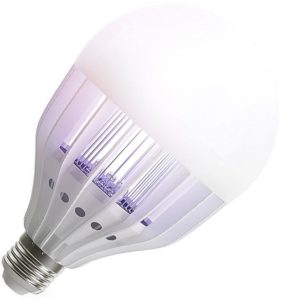Black light refers to the type of light, or the light fixture that has a spectrum above the visible spectrum.
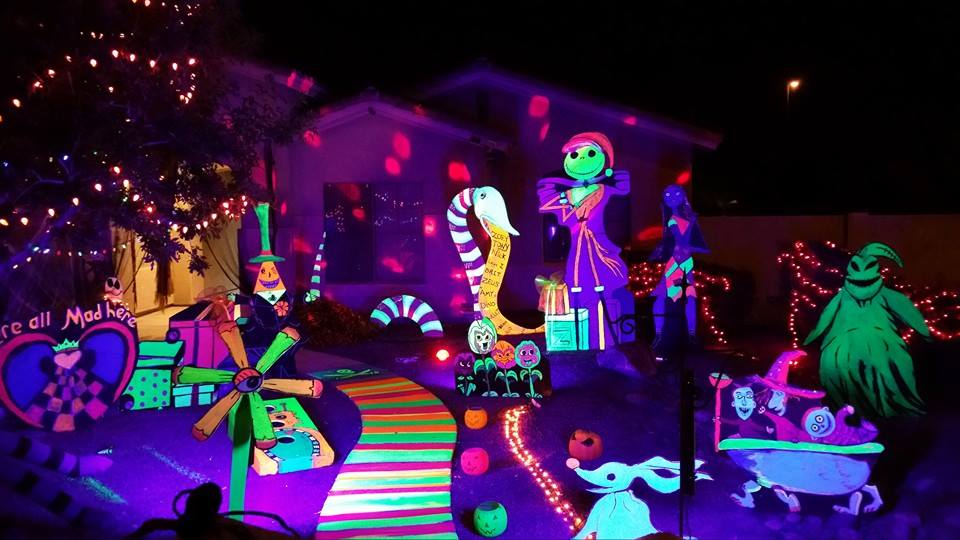
Performance and production of black light
Popular belief is that black lights make white shades stand out. Although this happens and is a phenomenon that almost everyone has seen, in nightclubs for instance, this light actually highlights fluorescent colours and materials.
The thing about white clothing or white trainers is that many incorporate polyester in the fabric.
How to obtain black light?
- The first step is to filter the generated light by blocking most of the visible spectrum. This way, only ultraviolet light is propagated. These types of LED tubes or black light bulbs have a very faint purplish glow. They are often referred to as BLB lamps (Blacklight Blue) even though they do not have this colour at all.
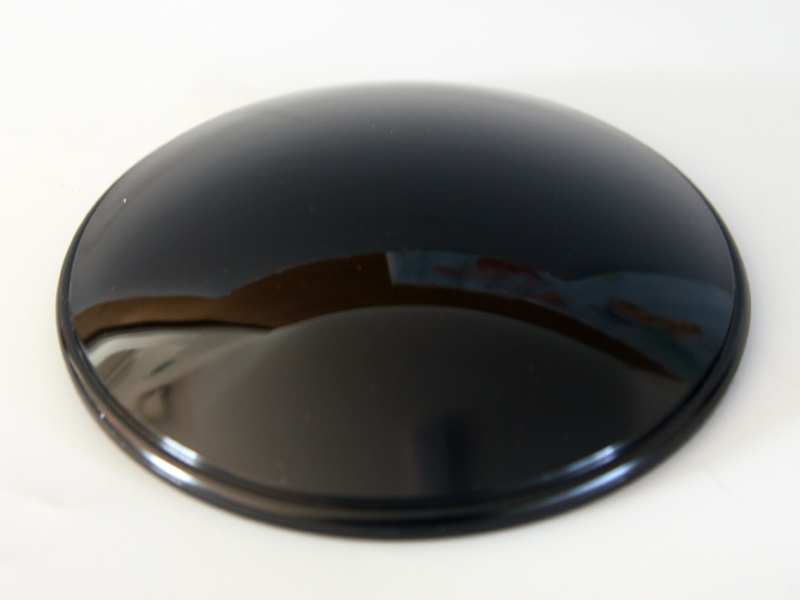
- The second technique generates ultraviolet light, but no filter is applied. In this case, the lamps do have a more intense blue glow, although the BL (blacklight) designation does not refer to this aspect.
Wood’s glass
This type of glass is traditionally used to filter light in black light lamps.
Developed by Robert Williams Wood in 1903, this glass eliminates the visible part of the light, allowing much of the ultraviolet and most of the infrared light to pass through.
Types of ultraviolet light
Ultraviolet light can be obtained using different technologies such as fluorescence, incandescent or LED, among others.
Fluorescent
They are manufactured in the same way and with the same characteristics as conventional tubes. The difference is that phosphor is used which emits UV light instead of white light.
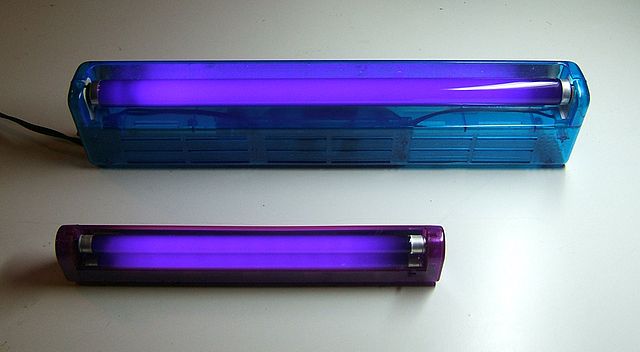
The phosphor used depends on the desired wavelength range of the light. The most common ones are strontium fluoroborate (SrB4O7F:Eu2+) or strontium borate (Sr3(BO3)2), both doped with europium for light between 368-371 nm, while at 350-353 nm the phosphor is obtained by doping barium silicate (BaSi2O5:Pb+) with lead.
Incandescence
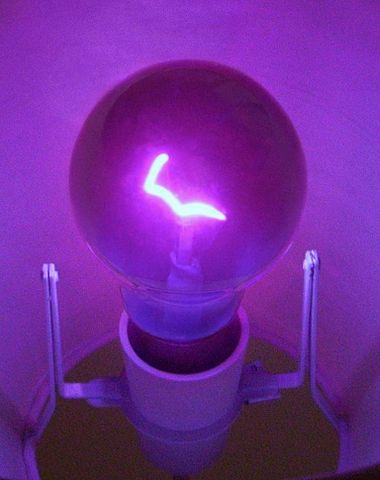
The light is obtained simply by filtering out the visible part by means of, for example, Wood’s glass. It was the first type of black light source designed.
No wonder that despite being very cheap and easy to produce, it is an extremely inefficient type of bulb.
Mercury vapour
High-power black light lamps can be produced. They do not use any phosphor to emit the light, in this case the light radiation generated by mercury at high pressures (500 to 1,000 kPa) in the band 350-375 nm is used.
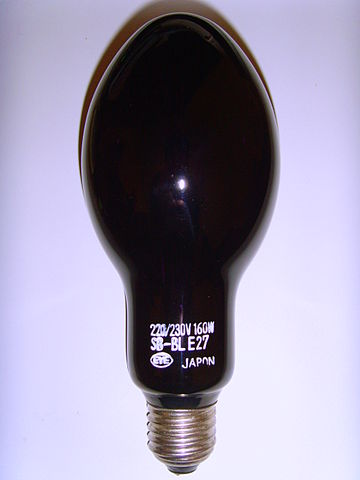
The resulting lamps produce more UVA radiation per watt than fluorescent lamps.
LED black light
Black light is also possible using certain types of LEDs, although it is not usually below 380 nm.
This results in a low-energy radiation where there is part visible light.
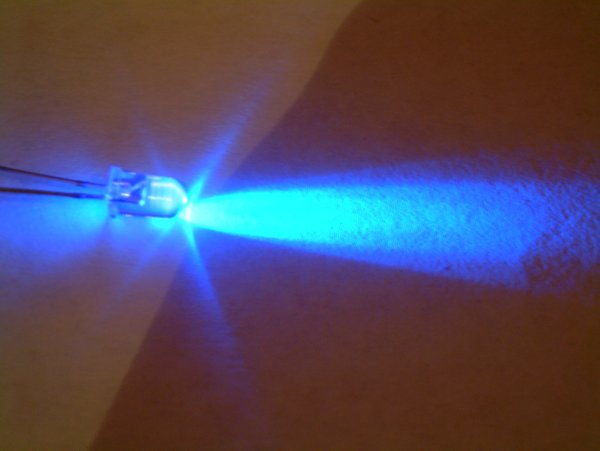
Applications of black light
This type of light has many applications, most of them based on the fact that it is able to reveal the presence of fluorescent materials. Most of the time, such materials remain invisible even when exposed to conventional UV light because the visible light emitted “covers” the faint glow they generate.
Among its many applications, it is worth highlighting the following:
Object authentication
Undoubtedly one of the most common uses. We see it mostly on paper money, or documents such as passports.
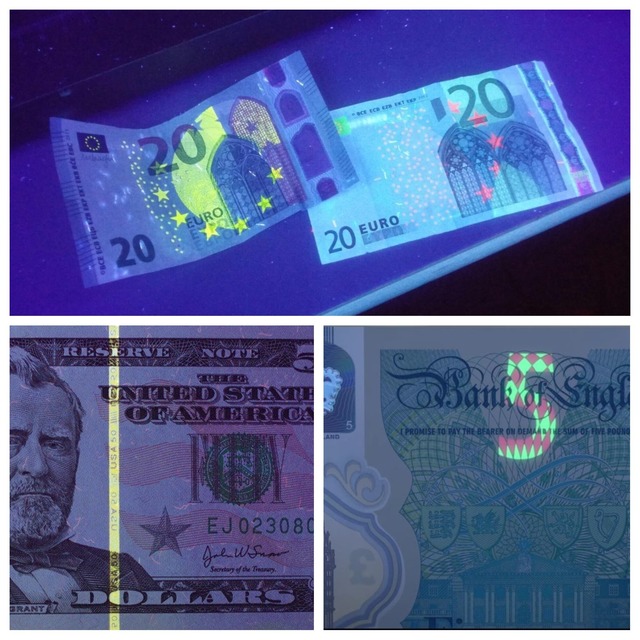
These objects usually include a band or design that will glow when exposed to UV light. Unlike ordinary paper, it is manufactured without the use of optical brighteners, which also react to black light.
Invisible ink
A spy movie classic. This fluorescent ink remains hidden if not exposed to the right light.
It is also used in nightclubs or events to stamp a mark on the wrist of the attendees. This way they are identified at the entrance, allowing them to re-enter without having to pay again.
Molecular biology
Because of the ability of some phosphor materials to bind to certain substances such as DNA, making them easier to visualise.
Repair and maintenance
It is also commonly used for non-invasive inspections, for example on household appliances.
A very common application is to detect a leak in a refrigerator circuit. A UV dye is added to the refrigerant which, when the system is started up, will reveal any problems in the distribution, whether it is a small crack in the pipe or a poorly sealed gasket.
Insect control
Blue lamps are particularly useful for combating flies and mosquitoes, as they attract the insects and eliminate them.
Antifreeze poisoning
Most antifreeze manufacturers add a fluorescent dye to ethylene glycol, its main component.
Ethylene glycol is a colourless, odourless substance with a sweet taste. This encourages accidental consumption, especially by children and animals. Due to the dye, it is easy to detect it in urine or other excretions.
Medical applications
The applications in the medical field, especially in dermatology, are very diverse, some of which are listed below:
Sterilisation
It can use UV light to prevent certain micro-organisms (bacteria, viruses and fungi) from reproducing, eliminating them without leaving residues. It is also common to see such devices in public bathrooms or swimming pools.
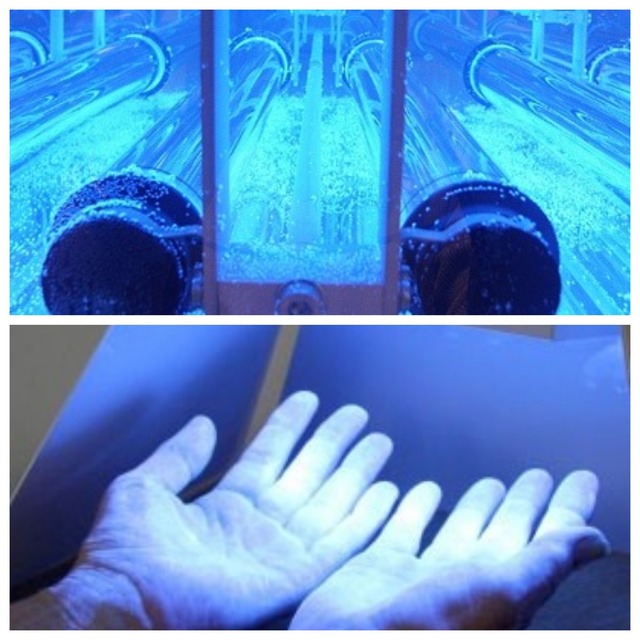
Germicidal tubes are used to disinfect and sterilise laboratory work booths, surfaces in hospitals, sanitary instruments, masks, bacteriological investigations, pharmaceutical processes, air conditioning systems and cold rooms.
Another major field of application is the disinfection of drinking water, waste water, purification of swimming pools, fountains and ponds, as it prevents the formation of algae.
Diagnosis of infections
It is especially used to diagnose infections of fungal or bacterial origin, the most common being acne-causing bacteria that glow under black light with an orange colour.
Bili Lights
This peculiar name refers to a special type of blue light that is used in phototherapy to combat jaundice in newborns.
This condition, which can have serious consequences, is characterised by yellowing of the skin and eyes caused by an excess of bilirubin.
Disease detection
In addition to infections, as indicated above, it can be used to detect other types of medical problems such as tuberous sclerosis.
Black light safety
As we have already mentioned, black light is nothing more than ultraviolet radiation. Within this we can distinguish three ranges UVA, UVB, UVC as they move away from visible light and their wavelength is reduced.
Although the type of light generated is mainly UVA, which is closest to visible light and carries less energy, some light in the UVB range may be radiated and therefore has to be filtered appropriately.
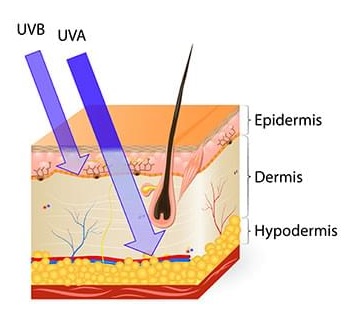
UVA light is the safest of the three, but it is not harmless. Remember that high exposure to this type of radiation is harmful to the skin. It ages the skin, destroys vitamin A, damages collagen fibres and can cause certain types of cancer such as melanoma.
It is important to note that a low wattage of black light is not sufficient to cause this type of damage, but there are cases where overexposure through the abuse, for example, UVA booths can be very damaging.
How to make a homemade black light
Now, we may want to experiment a little with this type of light and consider creating a homemade UV light. Let’s take a look at some simple projects we can do:
Ultraviolet light torch with a smartphone
A very simple trick to create a black light torch with your smartphone, which doesn’t require any complex materials. All we need is transparent tape and a blue permanent marker.
- First, place a piece of tape over the flashlight of the smartphone and paint it with the blue permanent marker.
- Then add a second piece, paint it and so on until you have five layers over the flashlight.
- This eliminates most of the visible light emitted by the flash, except for the bluest and some of the ultraviolet.
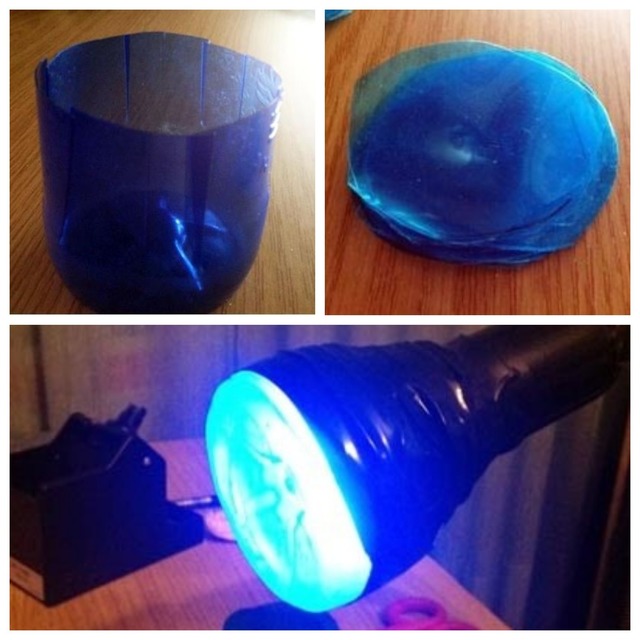
Homemade ultraviolet lamp
For this you will need a lamp with a bulb, preferably LED as they emit less heat, which is equivalent to 100W.
To build the filter use the base of a blue plastic bottle to which you will add more layers of blue plastic (other bottles, folders, etc.).
The result will serve to encapsulate the bulb and obtain an effect similar to the smartphone torch.
Although these DIY ultraviolet light projects emit almost no light in the UV range, they will light up the ink of fluorescent markers and other materials, as well as most fluorescent fish you wish to illuminate an aquarium. They will work for most people who require a black light source.


